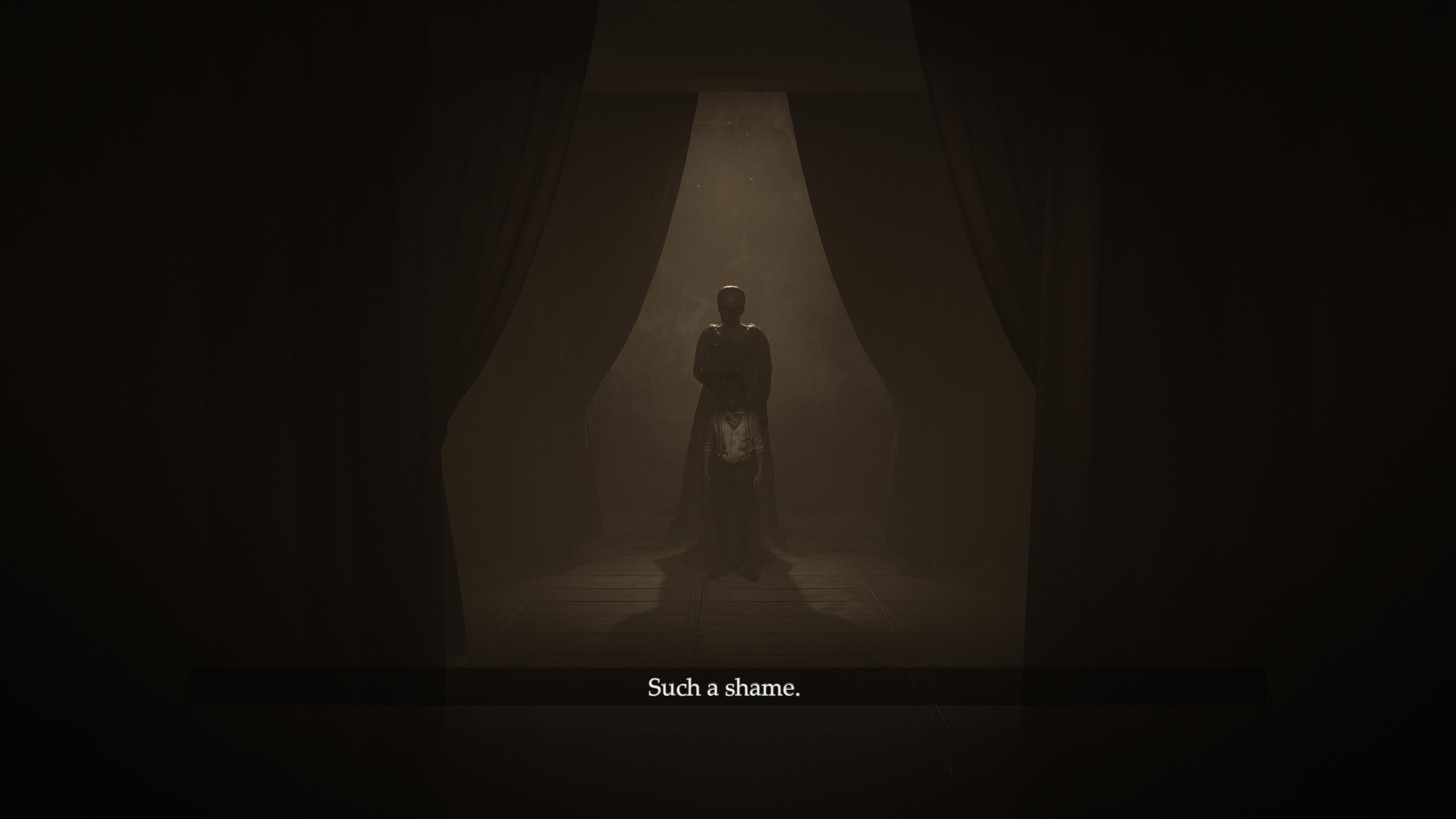There’s a lot to admire about Layers of Fear, Polish studio Bloober Team’s new reimagining of its (relatively) excellent surreal, psychological adventure horror series.
Developed alongside Anshar Studios, which previously assisted Bloober in expanding its sci-fi horror Observer in 2020, this new version of Layers of Fear compounds the original 2016 game, its DLC, Layers of Fear 2, a new DLC, and a new story meant to fill the gaps into one beautifully complex, decayed rose. But while the series has never looked better — Layers of Fear was made with Unreal Engine 5 — its narrative is contrived, sometimes choking on its own ambitious intricacies.
My disappointment is poetic. Most of the characters the game lets you choose — The Painter, his wife The Musician, The Actor, and The Writer, who is introduced to the series for the first time in this game — suffer from the same sickness: getting squished under impractical aspirations. Through Layers of Fear’s divided chapters, I play each of them in first-person and piece together their distressing pasts through notes and their own commentary.
Letters with scratched-out names, found sentimental objects like a cracked conch shell, and a barrage of enigmatic voiceovers tell me that the Layers of Fear cast has been successful in art before, and so they’re determined to keep striving, however unreasonable their goals start to feel in the game’s morphing, pitch-black houses. Only boring things can hold them back, earthly things, like the brown liquor The Artist depends on or the marred skin stretched painfully over The Musician’s burnt fingers.
But these are temporary setbacks — the splendour of their art and genius can’t be contained by something as small and imperfect as a body, the characters suggest. So they turn to the Rat Queen, the series’ villain formally introduced in 2019’s Layers of Fear 2, with her long teeth and black marble eyes, and she forces them to take her supernatural path to greatness.
Layers of Fear is my favourite walking simulator
With its emphasis on piece-by-piece discovery and exploration, there isn’t much typical “gameplay” in Layers of Fear, so I spend the majority of my time in it digesting this information. The series frequently has been called, with a little bit of a scoff, a “spooky walking simulator,” and that’s what I spend over 10 hours doing — walking and, sometimes, screaming at sudden sounds, like dissonant, echoing piano chords.
There aren’t options to do a lot more. Aside from walking, I can run — or, more accurately, walk with more DualSense feedback — and pick items up by hitting the right trigger. I can zoom in on secret codes and puzzle solutions since they’ve all been changed from their original iterations, and in the Layers of Fear 2 section, I can crouch into vents.

The most significant gameplay adjustment between this Layers of Fear and previous titles is the introduction of a handheld light source. It isn’t particularly shocking, but it breaks the series’ passivity tradition since the lights are not only practical, they’re violent. By hitting both triggers, my beam becomes incendiary, and I use it to singe a fresh puzzle type — it appears like a blurry blob and obscures exits and key items — as well as approaching enemies. For The Artist, who has shunned electricity in his palatial 1920s home, this means pointing a glowing gas lantern at visions of his dead wife, who may or may not have deserved it, but other characters get to use flashlights to illuminate the rot around them.
Anyway, I don’t mind just walking. The game’s level and puzzle designs are immaculately unpredictable. They shift when I’m not looking, and I get a nervous thrill from not knowing what will happen if I turn back around. Will I find a film photo? A chopped-up finger? Am I about to get trapped in a looping hallway, locked closet, or bedroom with no windows, keys, or air to breathe?
That is what makes Layers of Fear scary and, therefore, entertaining. With its rebuilt graphics, the game shapeshifts as convincingly as a terrified chameleon. If I look behind this empty picture frame, a door will appear. If I begin to play this roll of film, a big, white moon will descend and enrapture me. It’s scary to move with determination toward uncertainty, and Layers of Fear exploits that, diffusing in me a tumbling ocean wave of unease.
But, oh, God, the story.
Layers of convoluted lore
This is what makes the game both aggravating and appealing: If Layers of Fear were a person, it would live its whole life with its head up its arse. It wants, somewhere in its shifting staircases and infinite basements, to discover the psychology behind great art.
Since this is a horror game we’re talking about, its interpretation of that psychology is insufferable. I understand quickly that the environments I’m in are physical manifestations of artists’ looping thoughts and cobwebbed instincts, knotted with metal chains and wet candle wax. A creative mind is an uncomfortable and unsatisfying place, the game tells me and really lays on the metaphor.
Layers of Fear routinely makes references to legendary creative work like The Picture of Dorian Grey, Faust, The Shining, and so on, and I am hit on the head with how important art is; “Great art carries a heavy cost,” a note says, “To create is to reach into chaos,” a voiceover instructs. “Chaos is darkness. Warm. Soft. Swarming. He understood it in the end. Will you?”
Um, not really, TBH.
Taking cues from its influences, Layers of Fear’s demon is the Rat Queen, who is featured more prominently in the added Writer and Musician content. But Unlike Dorian Grey or Faust, in which men knowingly give up their souls in exchange for sex and knowledge, the characters in Layers of Fear are traumatized people the Rat Queen coerces into pursuing unattainable perfection. As a result, Layers of Fear isn’t a cautionary tale about selfishness.
I don’t really know what it is. It points out things it wants me to feel without letting me feel them. The most egregious case of this happening is in The Musician’s DLC, where found diary entries describe her house as a “prison.” Eventually, I place a dead songbird back into its cage. Yeah, I get it.
Whereas something like Faust satirizes the tortured artist, conveying that creative people aren’t necessarily special people and that they can be as bad as anyone, Layers of Fear seems to say that art is uncontrollable. It’s a hungry, magical force, and if a wife, or a sister, or a daughter is caught and bloodied in its insatiable mouth, then, well. So be it.
I find that difficult to accept. I think it’s damaging, too, to contextualize art as something dangerous and wild, however reverentially Layers of Fear phrases it. Art isn’t the boogeyman. It’s not the problem — people are, usually. Blaming a monster, like the Rat Queen, feels too easy to me. That’s a narrative issue I’ve had with Layers of Fear since the beginning, and the new Writer and Musician stories have unfortunately made it snowball.
Still, I am impressed with Bloober’s ground-up transformation of its series into a compact nightmare with white rats. The game is a show of strength, despite fans’ reservations for the studio’s upcoming Silent Hill 2 remake, and I admire a game that cares about art as deeply as its characters do. I only wish that it weren’t so annoying about it.

Leave a Reply